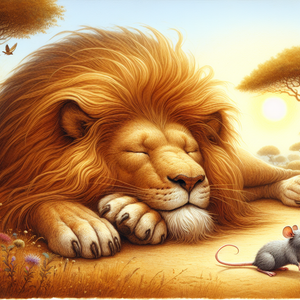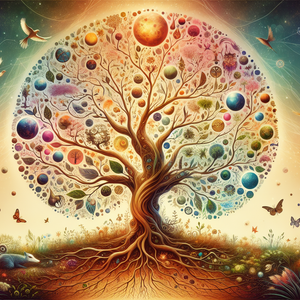Wildlife Storytelling as a Career Path

Storytelling has always been a cornerstone of human culture. It shapes how we perceive the world and enables us to connect with experiences far removed from our own. In the realm of wildlife conservation, stories are a particularly effective tool for bridging the emotional gap between people and nature. A well-crafted narrative can tug at the heartstrings, creating empathy for a polar bear stranded on a melting ice floe or awe at the breathtaking migration of monarch butterflies. Through these stories, abstract issues like climate change, habitat destruction, or biodiversity loss become tangible, personal, and urgent. For former Fish and Wildlife Refuge Managers and conservation professionals, storytelling offers a unique way to leverage their expertise. With hands-on knowledge of wildlife behavior, habitat management, and conservation challenges, these professionals are inherently credible storytellers. Their ability to share first-hand experiences—whether it’s the triumph of restoring a degraded wetland or the heartbreak of watching a species teeter on the brink of extinction—can inspire audiences in ways that resonate deeply. The demand for authentic voices in wildlife storytelling has never been higher. In an era of increasing environmental awareness, there is a growing hunger for stories that not only educate but also motivate action. This makes storytelling an invaluable tool for conservationists to continue their advocacy efforts, even after leaving traditional roles such as managing wildlife refuges.
Pathways into Wildlife Storytelling
Choosing wildlife storytelling as a career path opens up a multitude of opportunities, each offering distinct ways to engage with audiences, share knowledge, and champion the natural world. Here are some of the most prominent pathways: 1. Nature Writing and Blogging: Writing is one of the oldest and most accessible forms of storytelling. From books and feature articles to personal blogs, writing allows conservationists to share their passion and expertise with a wide audience. For instance, a former Fish and Wildlife Refuge Manager could write about the intricate behavior of migratory birds, the recovery process of an endangered species, or the behind-the-scenes efforts to restore a degraded ecosystem. Publications such as National Geographic, Audubon, and Scientific American often seek voices that can bring environmental topics to life in compelling ways. Similarly, op-eds in newspapers or online platforms can influence public opinion and policy discussions. For those seeking independence, blogs and personal websites allow storytellers to engage directly with an audience, building a loyal following over time. 2. Documentary Filmmaking: The visual medium of film holds unmatched potential for showcasing the beauty and complexity of the natural world. Iconic documentaries like Planet Earth and The Elephant Whisperers have demonstrated how storytelling through film can captivate global audiences and inspire action. Aspiring filmmakers no longer need access to big budgets or industry connections to get started. Advances in technology have democratized filmmaking, with affordable cameras, drones, and editing software making it possible to produce high-quality content. For those with limited resources, collaborating with established filmmakers or pitching ideas to production companies can be an effective way to enter the field. A former refuge manager, for example, could create a short film documenting the rehabilitation of an injured animal or the importance of certain habitats for ecosystem health. 3. Podcasting and Audio Storytelling: The rise of podcasts has created a new frontier for wildlife storytelling. With their low production costs and growing popularity, podcasts offer a versatile platform for sharing stories about the natural world. A podcast series could explore the day-to-day challenges of managing a wildlife refuge, recount the recovery of a near-extinct species, or highlight indigenous perspectives on wildlife conservation. For example, a podcast episode might feature interviews with field biologists or conservationists describing their work, or it could provide an audio diary of a field expedition to study endangered species. The intimate nature of audio storytelling fosters a personal connection with listeners, making it an ideal medium for engaging audiences. 4. Social Media Storytelling: Social media platforms like Instagram, YouTube, and TikTok have become powerful tools for wildlife storytellers to reach global audiences. These platforms thrive on visual storytelling, allowing conservationists to share stunning wildlife photography, short educational videos, and behind-the-scenes glimpses into conservation work. For instance, a YouTube series could document the journey of an animal being rehabilitated and released back into the wild. Instagram posts could feature before-and-after images of restored habitats, while TikTok videos might use humor and creativity to explain the ecological importance of pollinators. Social media storytelling is particularly effective for reaching younger audiences, who are often eager to engage with environmental content in innovative formats.
Supporting Examples: Successful Wildlife Storytellers
Many individuals have successfully transitioned into careers as wildlife storytellers, using their platforms to advocate for conservation. Dr. Jane Goodall is a prime example, using books, lectures, and documentaries to share her groundbreaking work with chimpanzees and inspire global efforts to protect wildlife. Similarly, Sir David Attenborough’s storytelling has captivated audiences for decades, raising awareness about biodiversity and climate change. On a smaller scale, projects like the "Meet the Ocean" podcast or the YouTube channel "AntsCanada" demonstrate how passionate individuals can build dedicated followings by sharing creative, informative, and engaging stories. These examples highlight the potential for wildlife storytelling to make a meaningful impact, regardless of the storyteller’s resources or starting point.
In an era where environmental challenges dominate global headlines, wildlife storytelling offers a powerful way to inspire change and foster a deeper connection to the natural world. For former Fish and Wildlife Refuge Managers or other conservation professionals, this career path presents an opportunity to combine expertise with creativity, providing a fulfilling way to continue advocating for the environment. Whether through writing, filmmaking, podcasting, or social media, the possibilities for wildlife storytelling are vast and varied. By sharing compelling stories about the natural world, storytellers can shape how people understand and value the environment—one story at a time. For those passionate about conservation, wildlife storytelling is not only a viable career path but also a meaningful way to make a lasting impact on the planet.
Wildlife Documentary Filmmaker
National Geographic, BBC Earth, Netflix
Responsibilities
Develop and produce visually compelling documentaries that highlight environmental issues, wildlife behavior, and conservation efforts.
Collaborate with scientists, conservationists, and local communities to accurately depict ecological stories.
Use cutting-edge technology such as drones, underwater cameras, and time-lapse methods to capture unique footage.
Skills/Qualifications
Expertise in videography, editing software (e.g., Adobe Premiere Pro, Final Cut Pro), and storytelling techniques.
Field experience in remote or challenging environments.
Industry connections with production companies like National Geographic, BBC Earth, or Netflix.
Environmental Podcast Producer/Host
World Wildlife Fund (WWF), NGOs, independent media networks
Responsibilities
Create engaging audio content focused on wildlife conservation, climate change, or ecological topics.
Conduct interviews with conservation experts, researchers, or indigenous leaders to share diverse perspectives.
Script, edit, and publish episodes on platforms like Spotify or Apple Podcasts.
Skills/Qualifications
Proficiency in audio editing software (e.g., Audacity, Adobe Audition).
Strong communication and interviewing skills.
Ability to research and present complex environmental issues in an engaging way.
Example employers/partners: World Wildlife Fund (WWF), NGOs, or independent media networks.
Wildlife Photographer and Visual Storyteller
National Geographic, Audubon Society, wildlife reserves
Responsibilities
Capture striking images of wildlife and their habitats, often under challenging conditions.
Create photo essays or visual stories for digital platforms, magazines, or exhibitions.
Advocate for conservation through impactful imagery that raises awareness and funds.
Skills/Qualifications
Advanced photography skills, including knowledge of equipment like telephoto lenses and post-processing software (e.g., Adobe Lightroom).
Understanding of animal behavior and ecosystems to anticipate the perfect shot.
Experience working with organizations like National Geographic, Audubon Society, or wildlife reserves.
Social Media Content Creator (Environmental Focus)
Patagonia, The Nature Conservancy, World Wildlife Fund (WWF)
Responsibilities
Design and share engaging content (videos, infographics, reels) to promote wildlife awareness and conservation on platforms like Instagram, TikTok, and YouTube.
Collaborate with NGOs, researchers, and conservation groups to amplify their messages.
Track audience engagement and adapt strategies to reach a broader demographic.
Skills/Qualifications
Proficiency in video editing, graphic design, and social media analytics tools.
Creativity in translating complex conservation topics into digestible, shareable content.
Partnerships with brands like Patagonia, The Nature Conservancy, or World Wildlife Fund (WWF).
Conservation Educator and Storyteller
zoos, aquariums, Conservation International
Responsibilities
Develop and deliver educational programs or workshops centered on environmental conservation and wildlife protection.
Use storytelling techniques to engage audiences of all ages—particularly students and community groups.
Create multimedia presentations, virtual tours, or live demonstrations that bring ecological concepts to life.
Skills/Qualifications
Background in environmental education or ecology, with strong public speaking skills.
Ability to utilize tools like AR/VR for immersive storytelling or hands-on teaching aids.
Work with organizations like zoos, aquariums, or conservation nonprofits such as Conservation International.


